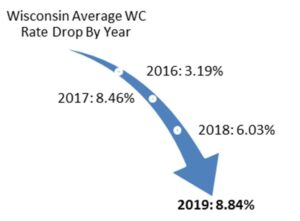How much does it cost to get a 1-year term life insurance policy?

Term life insurance is a popular choice for individuals seeking affordable coverage for a specific period. If you’re considering a 1-year term life insurance policy, it’s essential to understand the factors that influence its cost and how to choose the right policy for your needs. In this article, we will delve into the details of term life insurance and explore the average cost of a 1-year policy. Additionally, we will discuss ways to reduce the cost of your insurance premiums.
Understanding Term Life Insurance
Before discussing the cost of a 1-year term life insurance policy, let’s first understand what term life insurance is. Term life insurance is a type of life insurance that provides coverage for a specified period, typically ranging from 1 to 30 years. Unlike whole life insurance, which offers lifetime coverage, term life insurance is designed to protect individuals during specific periods of their lives, such as when they have dependents or financial obligations.
What is Term Life Insurance?
Term life insurance is a straightforward and affordable form of life insurance that pays a death benefit to the policyholder’s beneficiaries if they pass away during the term of the policy. It offers pure life insurance coverage without any investment or cash value component. This simplicity makes term life insurance an attractive option for individuals seeking affordable protection.
But what exactly does the term “term life insurance” mean? Well, the term refers to the duration of the coverage. For example, if you purchase a 10-year term life insurance policy and pass away within those 10 years, your beneficiaries will receive the death benefit. However, if you outlive the policy term, the coverage expires, and there is no payout.
Term life insurance is often chosen by individuals who have specific financial obligations or dependents that they want to protect. For instance, parents with young children may opt for a term life insurance policy to ensure that their children are financially secure in the event of their untimely demise. Similarly, individuals with significant debts, such as mortgages or student loans, may choose term life insurance to cover those liabilities and prevent their loved ones from being burdened with the financial responsibility.
Benefits of Term Life Insurance
One of the significant benefits of term life insurance is its affordability. Compared to other types of life insurance, term life insurance generally offers lower premiums, making it accessible to a broader range of individuals. This affordability allows individuals to obtain the coverage they need without straining their budget.
Another advantage of term life insurance is the high level of coverage it provides. With term life insurance, policyholders can select a death benefit amount that suits their specific needs. This means that if the policyholder passes away during the policy term, their beneficiaries will receive a substantial payout, providing them with financial security and stability during a difficult time.
Term life insurance policies are also flexible, as they allow policyholders to choose the length of coverage that suits their needs. Whether you require coverage for a year, a decade, or several decades, term life insurance offers options to accommodate varying needs and budgets. This flexibility ensures that individuals can tailor their coverage to align with their specific circumstances and financial goals.
Furthermore, term life insurance policies often come with the option to convert to a permanent life insurance policy. This means that if your circumstances change, and you decide you need lifelong coverage, you can convert your term life policy into a whole life or universal life policy without having to undergo a medical exam or prove insurability again. This conversion option provides additional peace of mind and long-term protection.
In conclusion, term life insurance is a valuable and affordable form of life insurance that offers individuals the opportunity to protect their loved ones and financial obligations during specific periods of their lives. With its simplicity, affordability, high coverage levels, and flexibility, term life insurance is a popular choice for those seeking reliable and accessible life insurance coverage.
Enter your ZIP code below to compare cheap life insurance rates.
Secured with SHA-256 Encryption
Factors Influencing the Cost of Term Life Insurance
Several key factors influence the cost of a 1-year term life insurance policy. It’s important to consider these factors when evaluating quotes from different insurance providers to ensure you get the best coverage at an affordable price.
Age and Health Status
Age and health status are significant determinants when it comes to calculating the cost of a 1-year term life insurance policy. Typically, younger individuals and those in good health can obtain coverage at lower premiums. Insurance providers consider age and health as indicators of mortality risk, which directly affects the cost of insurance coverage.
For instance, a 30-year-old nonsmoker with no pre-existing medical conditions would likely pay less for a 1-year term life insurance policy compared to a 50-year-old smoker with underlying health concerns.
Moreover, age and health status can also influence the underwriting process. Insurance companies may require medical examinations or request access to medical records to assess an applicant’s health condition accurately. This additional step ensures that the premiums charged are commensurate with the insured individual’s risk profile.
Lifestyle and Occupation
Insurance providers also take into account lifestyle factors and occupation when assessing the cost of term life insurance. Certain lifestyles and occupations may be considered more hazardous or involve higher levels of risk, increasing the cost of insurance premiums.
Individuals engaged in high-risk occupations or hobbies, such as pilots or extreme sports enthusiasts, may face higher premiums due to the increased likelihood of accidents or injuries. Similarly, individuals with risky lifestyles, such as those who frequently travel to dangerous destinations or participate in risky activities, may also experience higher insurance costs.
It’s important to note that insurance providers assess lifestyle and occupation on a case-by-case basis. For example, a person who occasionally skydives as a hobby may face different premium rates compared to someone who skydives professionally.
Policy Length and Coverage Amount
The length of the term and the coverage amount you choose will also impact the cost of your 1-year term life insurance policy. As expected, longer terms and higher coverage amounts typically result in higher premiums. It’s crucial to strike a balance between obtaining adequate coverage and affordability when selecting the policy length and coverage amount.
When deciding on the policy length, individuals must consider their specific needs and financial circumstances. For example, someone with young children may opt for a longer policy length to ensure their children are financially protected until they reach adulthood.
Moreover, the coverage amount should reflect the insured individual’s financial obligations and goals. Factors such as outstanding debts, mortgage payments, and future education expenses should be taken into account when determining the appropriate coverage amount. It’s important to strike a balance between providing financial security for loved ones and keeping the premiums within a manageable range.
Additionally, some insurance providers offer the option to add riders or additional coverage to the policy, such as critical illness coverage or disability insurance. These additional features can provide extra protection but may also increase the overall cost of the policy.
By understanding the various factors that influence the cost of a 1-year term life insurance policy, individuals can make informed decisions when selecting coverage. It’s essential to evaluate quotes from different insurance providers, considering factors such as age, health status, lifestyle, occupation, policy length, and coverage amount. With careful consideration, individuals can find the right balance between cost and coverage to ensure their loved ones are financially protected in the event of an unforeseen tragedy.
Average Cost of a 1-Year Term Life Insurance Policy
When it comes to planning for the future, ensuring financial security for your loved ones is a top priority. One way to achieve this is by investing in a life insurance policy. While there are various types of life insurance policies available, a 1-year term life insurance policy is often considered an affordable option for short-term coverage.
Term life insurance provides coverage for a specific period, typically ranging from 1 to 30 years. During this time, if the policyholder passes away, the beneficiaries named in the policy will receive a death benefit. Unlike permanent life insurance policies, such as whole life or universal life, term life insurance does not accumulate cash value over time.
Now, you might be wondering about the cost of a 1-year term life insurance policy. Well, the good news is that it is generally more affordable compared to longer-term policies. However, it’s important to note that the cost can vary depending on various factors, such as your age, gender, health, and lifestyle.
Cost for Different Age Groups
Age plays a significant role in determining the cost of a 1-year term life insurance policy. Generally, younger individuals, such as those in their 20s or 30s, can secure coverage at lower premiums. This is because they are considered to have a lower mortality risk and are less likely to have pre-existing health conditions.
On the other hand, individuals in their 40s or 50s may face slightly higher premiums due to increased health risks associated with age. As we age, the likelihood of developing health issues, such as heart disease or diabetes, increases. Insurance companies take these factors into account when calculating premiums, which can result in higher costs for older individuals.
It’s worth noting that while age is a significant factor, other personal factors, such as overall health and lifestyle choices, can also influence the cost of a 1-year term life insurance policy. For example, a 30-year-old individual who smokes may have higher premiums compared to a non-smoker of the same age.
Cost Variations by Gender
Gender is another factor that can influence the cost of a 1-year term life insurance policy. Historically, women have had lower insurance rates compared to men due to their longer life expectancies. Insurance companies consider life expectancies when determining premiums, as longer life expectancies mean a longer period for the policyholder to pay premiums before the potential payout.
However, recent changes in life expectancy trends have resulted in more balanced rates between genders. While women still tend to live longer than men, the gap has narrowed, leading to more equitable pricing for both genders.
It’s important to remember that these are general trends, and individual circumstances may vary. Insurance companies assess multiple factors when determining premiums, and it’s always a good idea to compare quotes from different providers to find the best coverage at an affordable price.
How to Choose the Right Term Life Insurance Policy
Choosing the right term life insurance policy requires careful consideration of your insurance needs and diligent research.
Assessing Your Insurance Needs
Begin by assessing your insurance needs and understanding the financial obligations you want your life insurance coverage to address. Consider factors such as outstanding debts, mortgage payments, and future expenses your loved ones may incur in your absence.
By evaluating your insurance needs, you can determine the appropriate coverage amount and duration that align with your specific circumstances.
Comparing Different Insurance Providers
Once you have a clear understanding of your insurance needs, it’s important to compare quotes from different insurance providers. Request quotes from multiple reputable companies and evaluate their coverage options, customer reviews, and financial strength.
Additionally, consider factors such as the insurer’s claims payout history and customer service reputation to ensure that you are selecting a reliable and trustworthy insurance provider.
Enter your ZIP code below to compare cheap life insurance rates.
Secured with SHA-256 Encryption
Ways to Reduce the Cost of Your Term Life Insurance
While term life insurance is generally affordable, there are strategies you can implement to further reduce the cost of your premiums.
Maintaining a Healthy Lifestyle
Adopting a healthy lifestyle can positively impact the cost of your term life insurance policy. Insurance providers may offer lower premiums to individuals who demonstrate good health habits, such as maintaining a healthy weight, engaging in regular exercise, and refraining from smoking.
By prioritizing your health, you not only reduce the risk of developing medical conditions but may also benefit from lower insurance premiums.
Negotiating Your Policy Terms
Lastly, don’t hesitate to negotiate the terms of your term life insurance policy. In some cases, insurance providers may be open to adjusting certain aspects, such as premium rates or coverage amounts, to better suit your needs and budget.
Before settling on a policy, engage in a discussion with your insurance provider to explore potential negotiation opportunities and ensure that you are getting the best possible terms.
Conclusion
When considering a 1-year term life insurance policy, understanding the factors that influence its cost is essential. Age, health status, lifestyle, and the coverage amount all play a significant role in determining the premiums you will pay. By carefully assessing your insurance needs, comparing quotes from different insurance providers, and implementing strategies to reduce costs, you can secure a suitable and affordable 1-year term life insurance policy that provides peace of mind for you and your loved ones.
Frequently Asked Questions
What factors affect the cost of a 1-year term life insurance policy?
The cost of a 1-year term life insurance policy can vary based on several factors such as the applicant’s age, health condition, gender, occupation, and the coverage amount desired.
Is a 1-year term life insurance policy a good option?
A 1-year term life insurance policy can be a suitable choice for individuals who need temporary coverage for a specific period. It provides financial protection for a year but does not offer long-term benefits like whole life insurance.
Can I renew a 1-year term life insurance policy after it expires?
Most 1-year term life insurance policies do not offer automatic renewal. However, some insurers may allow policyholders to renew their coverage for another term, but the premium rates may increase based on the individual’s age and health at the time of renewal.
What happens if I outlive my 1-year term life insurance policy?
If you outlive your 1-year term life insurance policy, the coverage will expire, and you will not receive any death benefit. It is essential to review your insurance needs regularly and consider purchasing a new policy or converting to a different type of coverage if necessary.
Can I convert a 1-year term life insurance policy into a permanent policy?
No, 1-year term life insurance policies typically do not offer conversion options. Conversion privileges are more commonly available in longer-term policies, such as 10, 20, or 30-year terms. It is advisable to check with your insurance provider for specific details on conversion options.
Enter your ZIP code below to compare cheap life insurance rates.
Secured with SHA-256 Encryption
Jeffrey Johnson
Insurance Lawyer
Jeffrey Johnson is a legal writer with a focus on personal injury. He has worked on personal injury and sovereign immunity litigation in addition to experience in family, estate, and criminal law. He earned a J.D. from the University of Baltimore and has worked in legal offices and non-profits in Maryland, Texas, and North Carolina.
He has also earned an MFA in screenwriting from Chapman Univer…
Benjamin Carr
Former State Farm Insurance Agent
Benjamin Carr worked as a licensed insurance agent at State Farm and Tennant Special Risk. He sold various lines of coverage and informed his clients about their life, health, property/casualty insurance needs.
Assessing risks and helping people find the best coverage to suit their needs is a passion of his. He appreciates that insurance was designed to protect people, particularly during times…
Former State Farm Insurance Agent
Editorial Guidelines: We are a free online resource for anyone interested in learning more about life insurance. Our goal is to be an objective, third-party resource for everything life insurance-related. We update our site regularly, and all content is reviewed by life insurance experts.



